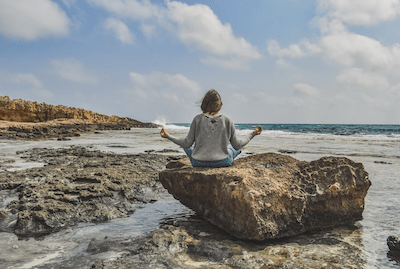Test number two
Is this posting?
Is this posting?
This is a test to see how it comes up.


Sodsnetpor913l81atci45cfu0gg452tlm04m1l300c08g1f8964ac5c14fm

Last Sunday, May 14, 2022, crowds in more than 380 U.S. cities were in the streets protesting the intention of four and possibly five justices on a less-than-supreme court to support the anti-abortionists’ forced pregnancy agenda. Two of those justices have no business being there at all. They’re are there illegitimately due to Hard Cold Right wing political machinations by Mitch McConnell and Humpty Trumpty, but you know that story already.
Approximately three fourths of the people of this country support every woman’s right to decide whether she wishes to be pregnant or not. That’s not surprising since that right to self-determination was recognized by Argentina in 2020 and Mexico in 2021. But travel to Mexico or Argentina is too pricey for some of the women who would be hit by a U.S. ban.
The leak” of the draft opinion to jettison Roe vs. Wade has been the subject of great hand-wringing by right-wingers who decry the “loss of trust” in the Supreme Court as a result — especially by Justice Clarence Thomas whose wife is a rabid ultra-rightist partisan and whose own record on the court makes it clear that he should never have been appointed to it. I think that’s backwards. Keeping a potential ruling secret until it’s mposed on a nation bitterly imposed to it is one more anti-democratic act in which a few impose their personal will upon the nation. That’s oligarchy! Leaking had the effect of making possible nationwide debate by all concerned and affected citizens. Isn’t that what democracy is supposed to do? Indeed, shouldn’t any policy this huge and consequential be floated for public deliberation before any draft opinion is even written? That’s democratic. Decisions by a small cabal on a court that has been packed by the actions of an ultra right-wing Senator and President are not.
Thomas worries about the reputation of the Court due to the leak. The Court’s reputation already smells like a broken cessool. In 2000 it chose to ignore the will of the people and installed someone as president who was decisively defeated. Thomas’ own reputation is at the bottom of the cesspool (along with Alito’s.) The powerful reality is that the reputation of the court would be damaged many times more by abandoning Roe than by any leak. Jettisoning democracy is a much worse error than leaking an opinion.
Unfortunately the Hard Cold Right Republican establishment doesn’t give a wooden defecation about democracy despite all rhetoric to the contrary. They want control. In this case it’s men controlling women. It’s the old story of “keep them barefoot, pregnant, and in the kitchen.” Yes, there are some women fellow travellers who support that — apparently including Justice Amy Conan-Barrett —although she still has a brief window of time in which to redeem herself, to vote to keep Roe and escape the fate of being a traitor to her sex— but as the Texas vote legislature’s vote to pay a $10,000 bounty to people who rat on friends and neighbors who have orperform abortions shows clearly, just a few. The Texas legislation was supported by 59 men and 10 women (all Republicans.)
Women are every bit as entitled to be in charge of their own bodies and lives as men. And the people of the U.S. ought to be entitled to have a Supreme Court that is not empowered to legislate
from the bench by imposing its own minority views on the nation. If this Court does not come to its senses and leave the Roe vs. Wade ruling intact, the nation should rethink the Court’s structure and process—and include recusal measures in which someone outside the court can challenge conflicts of interest and require recusal by any justice so implicated. Kow-towing to a political ideology which says the few can impose their will on the many ought to be one ground for such a requirement of recusal.
In the meantime, I hope people all across the country will throw out of office and replace every elected official who supports any and every forced pregnancy agenda. Or it’s another nail in the coffin of democracy. As past Justice Salia put it, a democracy in which the people’s will is repeatedly ignored by a committee of unelected lawyers is not a democracy at all.
From the consciousnessandculture.com blog.

The full answer may be longer than you wanted.
There are at least four different basic answers—and then there’s all the rest of it.
One basic answer is, “Whatever position gives you the best signal that your mind has gone away from awareness-in-the-moment into either drifty mind or washing-machine mind,
A second is, “a classical cross-legged or chair position with a mudra of your choice.”
A third is, “Any position that you can physically manage and maintain for some time.”
A fourth is, “Any position in which you’re willing to meditate, in contrast to other supposedly correct positions that cause you to avoid meditating when you think about them.
Any one of these answers might be best for you. You can judge that for yourself after reading about each.
The first answer contains the key insight that the mental effort required to stay aware of your posture in the present instant is itself a powerful aid to maintaining a focused meditative state. Sitting straight upright on either a cushion or chair, with your eyes focused slightly downward anywhere from about six feet ahead to the far horizon, and your hands forming a perfect (i.e. non-drooping) mudra is best of all if you can manage it. (Yes, that’s the second answer above.) Why? Because your mind will inevitably have a tendency to drift here or there, and if you’re sitting in such a position with the intention to maintain it, then as soon as you notice that you’re slumping just a bit, or that in your Zen mudra your thumbs are pointing downward rather than forming an egg than a round ball, or that your jnana mudra is similarly droopy, you can straighten up your back, reform your mudra, breathe deeply, and continue your classical meditative posture. Maintaining it requires mindful attention to keeping some of your mind in the present.
If, of course, you’re doing an extended meditation—especially in a group—in which you’re supposed to remain motionless, after a time your body will be experiencing physical pain just from maintaining the fixed position and you will have no alternative but to be aware of your physical position and sensations. When you see a picture of a group of people meditating, all sitting in the very same or almost the very same posture, that’s probably what’s happening. There’s a special kind of psycho-somatic learning that’s occurring just by maintaining that position. (In many meditation groups, after such a period of sitting there’s a period of walking meditation that gives your body a chance to move.
With the second answer above, a full-lotus meditation is favored by some practitioners. That’s a cross-legged position with each leg crossed above the other and the soles facing upward. (See the link below.) Some yogis maintain the ability to sit full-lotus, or in even more demanding and in some cases amazing positions, into old age. Those who do usually sit (or in some cases stand) in such positions every day. When I was in my twenties and thirties I used to sit full lotus. Toward the end of my thirties a doctor told me, “There seems to be some evidence that full lotus is bad for your ankles, at least for some people.) After that I moved to a half-lotus position in which the legs are crossed only one is pulled up through the other. Less demanding yet is a simple cross-legged position. Your body will probably tell you which cross-legged position can work for you.
In any position on the floor or ground it helps to raise your butt about four inches off the floor so that there’s a downward tilt from your butt to your knees. Every meditation center has cushions that do this. It’s best to sit on the forward edge of the cushion rather than in the middle of it. The downward slope makes it much easier to keep your spine straight and sit up straight. And it’s more comfortable than sitting flat on the floor or ground. Most pillows doubled once will do nicely as a substitute for a meditation cushion—but if you want the real thing you can find them in shops that have meditation accessories and online. When i’ve had neither cushion nor pillow, I’ve found that turning one clean sandal or shoe upside down, placing it on top of the other, and using the two as a cushion usually does the job. Outdoors you might find a small slope or bump somewhere nearby that’s about the right size to raise your butt enough for comfortable sitting and a straight spine,
There is also kneeling meditation, kneeling with your legs together and back straight up. Many people who favor that position find that a cushion or pillow (or even a folded jacket or sweater) between butt and legs is useful.
In meditation halls I sometimes noticed some of people sitting up straight in chairs rather than on the ground or a cushion in a cross-legged position. In most places there were a few chairs somewhere in the room, mostly occupied by elderly meditators. An older friend and I sometimes led workshops together and he always sat in a chair. “My knees just won’t go into a cross-legged position,” he said. Now I’m older myself, with arthritis in my joints. At some point I moved from usually sitting cross-legged to preferring the chair. Still with a straight spine, looking slightly downward, keeping my mudra in its proper position, but my legs said “Thank you for not making us sit cross-legged on the ground any more.” My chair position is sometimes with my legs straight down and sometimes with them cross-legged beneath me on the chair.
All that involves sitting. Some years ago when I was doing a weekly class I asked the students to keep a meditation journal. To write down just a few sentences about what happened during their meditation period each day. One young woman consistently wrote that she just didn’t feel called to sit up during her meditation but preferred to lie down. She did, however, keep one of the most detailed and best journals of her meditation experience, and said it was almost always valuable in helping her feel better. As you probably know, lying down tends to predispose people more toward a hypnogogic, dreamlike state and less toward a mindful, moment-by-moment awareness state. Her meditations were a kind of combination of both. And very interesting, especially in their contemplative excursions. That was what worked for her. It was a clear case of meditating in her own way or not at all. So that becomes my final statement. Lying down meditation is not a position I suggest, but better than none. There are, after all, statues of reclining Buddhas scattered all over Southeast Asia. And it just might be what you need at a given moment. Assess your needs and learn to trust yourself.
If you want to meditate standing up, such as while waiting for a bus, I recommend a moving meditation rather than standing motionless. An online search for <standing moving meditations> will bring up a number of YouTube videos of such movement patterns. The ultimate expression of this is Tai Chi.
When properly performed, hatha yoga is also a meditation. Attention to your breathing in a meditative manner while performing your asanas, and to fully experiencing the sensations of your body as you move and the rest of your field of awareness make your yoga session into a transformation in consciousness that’s quite different than it is if you go through the motions with an athletic mindset. This can be structured pranayama or simply bare attention as described just above,
For photos of eight sitting meditation positions see Melissa Eisler’s <https://mindfulminutes.com/how-to-sit-for-meditation/>.

STABBING DEMOCRACY TO DEATH
In an authoritarian nation like Russia a question is how close to totalitarianism, as under Stalin and under Hitler’s Germany, the authorities will go. Putin has taken steps to make it more so with his ever-greater censorship and moves to control everything in the media that does not follow his party line.
The United States has long paid at least lip service to democracy and viewed itself as a defender of “freedom.” Rather limited freedom for many of the people. It’s obvious in the patently antidemocratic “electoral college” for Presidential elections, with the result that two of the four presidents “elected” since the turn of the millennium had millions of votes fewer than their opponents. One political party has steadfastly and successfully opposed all attempts to eliminate the electoral college.
But in the years 2021 and 2022 the project of defeating democracy has taken a great leap forward. One political party U.S. is intentionally, systematically and methodically moving forward with a project to eliminate democracy and take authoritarian power for itself. This was visible to the entire world when the January 6 rioting mob stormed the Capital and tried to put the loser of even the electoral college vote into power.
That was just the visible tip of the iceberg. The greater damage, which may ultimately result in turning the U.S. into a fully authoritarian state with nothing but a fig-leaf of deceptive words that imply that it is a so-called democracy is the Republican project to 1) throw as many people as possible who look like they won’t vote Republican off the voter registration rolls, and 2) create electoral districts that assure them of victory at every level from state legislatures to the presidency regardless of what most voters want. While many people who are not Republicans realize this is happening, few have recognized it as the powerful threat to democracy that it is.
Computer databases and algorithms now make it possible to create electoral districts that are so bizarrely constructed to favor one party that no sane person would look at them and deny it. The “redistricting” or construction of new electoral districts that occurs every ten years after the census was never meant to be a political tool. It was meant to readjust districts to accord with population changes. But it’s a political tool now, wielded mainly by the Republican Party.
“Hey,” the Republicans say, “the Democrats are doing it too.” Yes—in the few states where they control the state office that does the redistricting—in retaliation for what the Republicans are doing in most of the country. But even in some of the states where the Democrats have control they have pushed successfully to set up nonpartisan commissions to carry out redistricting—such as in California. The results are radically different from the crazy-quilt districts of politically partisan redistricting. Those districts are typically constructed with a few simple lines. Any unprejudiced person looking at them would conclude that they are sensible. Any unprejudiced person looking at 2022 politically motivated districts would conclude that they’re just plain nuts.
The probable result is electoral victories for Republicans that reflect the will of a minority of the people and that disenfranchise many citizens. In other words, less democracy. Add that to the less democracy that comes from the systematic attempt to “cleanse” the voter rolls of as many probable non-Republican voters as possible. In other words, less democracy yet. That’s on top of the already anti-democratic electoral college.
Oh, and there’s also the matter of stacking the Supreme Court with political partisans instead of justices who have a history of impartial interpretation of the laws—partisans who are all too willing to “legislate from the bench.” Republican party legislators accuse the Democrats of that, but the evidence that they’re projecting their own dishonesty and hypocrisy is overwhelming.
Is all that the country we want? It’s what we’re moving toward.
I don’t love Democrats. I think many, and the party, are misguided in significant ways. I’d like to see other parties have a chance. I’d like to have electoral procedures that make that more possible, such as instant runoff voting. If I could set up my own party, it would be neither Democrat nor Republican. Beyond that, I might prefer no parties altogether. George Washington did, speaking again about how the “spirit of party” was a tragically negative influence that deterred democracy.
But as a minimum, there are four basic steps that could set the country back on a path toward more democracy rather than less. They are,
1. Nonpartisan drawing of electoral districts everywhere. Congress could require this.
2. Automatic registration to vote of every person at birth or naturalization. Denmark does this effectively.
3. Adopt Costa Rica’s Supreme Court procedure of having a rotating pool of justices with the requirement that any sitting justice, upon challenge (not upon his or her own volition), must be recused from any case where there is any conflict of interest and be replaced for that case with another justice from the pool.
4. Eliminate the electoral college in presidential elections—or at a minimum, require all states to apportion electors proportionally, as a few do now, rather than on a winner-take-all basis.
That’s a start. Unless we minimally do those four things, our nation is only a pretense of a democracy.
<<<<>>>

Never before has a war been so thoroughly photographed and documented as Putin’s invasion of Ukraine—the largest war in Europe since the end of World War II. As a result real events there can’t be papered over or denied as they often are by one side or both sides in most wars.
Seldom has an invasion been so obviously and clearly the doing of one person. History records Genghis Khan, Napolean, Hitler, and Stalin. Now we can add Putin. The past week heard President Joe Biden finger Putin by name, calling him a “butcher” and saying he should not remain in power.
Poor little verbally abused Vladimir acted grievously injured. How dare that nasty Mr. Biden call bombing hospitals, schools, kindergartens, apartment buildings and refugees trying to avoid getting killed the actions of a “butcher”? Even some of Biden’s European allies said that it was not nice for Mr. Biden to talk that way.
Really? At the very moment when Russian airplanes, cruise missiles, tanks and artillery are blasting away at Ukrainian cities and reducing Maruipol, to rubble, it is not nice to use the word butcher, or to suggest that the dictator who ordered the war and each day orders it to continue should be removed? (Especially since he called for the government of Ukraine to be replaced.)
Correct me if I’m wrong, but I think that Biden’s words did not physically injure or kill even one person. If we had an observer recording the invasion and bombing we could probably identify at least a handful of people who were murdered by Russian military forces during the brief time it took Biden to utter those sentences. The only harm done by Biden’s words was to Putin’s ego.
Putin has called for “an end to the war.” Perhaps it has slipped his memory that it is his troops that have invaded another country. Perhaps he has somehow not noticed that Ukraine has not fired a single shot into Russia, and that the war is entirely and totally a matter of the Russian invasion of Ukraine. Perhaps he has forgotten that there was no war until he ordered the Russian army and air force to invade and bomb Ukraine. Perhaps it has not occurred to him that the war could easily end instantly if he does no more than order Russia’s armed forces to cease fire immediately – stop shooting and bombing – and withdraw from Ukrainian territory. He can do that all by himself. After all, he’s a big boy—isn’t he?
Perhaps also, despite his deluge of words about the dangers posed to Russia by the big bad European military alliance (NATO), he may have conveniently overlooked the fact that the primary reason it exists at all is fear by most European nations that Russia may attack them—a fear well founded in history, and that he has now made terribly obvious is 100% valid today.
The Butcher of Moscow has accused Ukraine’s government of being controlled by “neo-fascists.” Maybe he’s misplaced his mirror—the mirror that would show him that his accusations are projections. Let’s see what the dictionary says. “Fascism: Authoritarianism, totalitarianism, dictatorship, rightism, nationalism. . .” Ah, I think we have almost a definition of the qualities Putin values in his government. One can reasonably suggest that HE IS THE NEO-NAZI in all this. But of course he does not care to look in the mirror.
Little Vladimir apparently wants respect. (Don’t we all?) To be thought of as a Great Man. Really? It’s too late. There is too much video footage and too many photographs which show that he deserves none at all. He may continue to bamboozle the Russian people long enough to keep his grip on power until he dies, but most of the world can see that the Emperor has no clothes. Historians from everywhere but Russia will speak of Putin’s war. Perhaps even of the Butcher of Moscow. He has said that he wishes to be like Peter the Great and Catherine the Great. Indeed—doesn’t he deserve a title too? How about “Vladimir the Small?”
<<<>>>

You’ve probably watched TV news that shows police car chases, murders, muggings, armed robberies, police shootings, and —well, you name the violent crime. At first glance they may seem quite different, but they have one thing in common: The perpetrators in all those categories are almost all male. In fact, pretty near the only category of violent crime in which women show up at all is those that take place in families or with close acquaintances, and even in those the numbers are far smaller for female than for male perpetrators.
If you raise your eyes from those details of the exciting 24/7 news coverage to look at violence in the broader sweep of history, you immediately see that the initiators and leaders of all of history’s great episodes of violence are male. To name just a few: Gengis Khan, many of the Roman Caesers, the Moghul invaders of India, Napolean, Hitler, Mussolini, Stalin—all men, every last one of them. And the generals of their armies? Again, all men. Most women don’t want to send their kids off to die in wars.
The big time financial whitecollar criminals and the legislators who write laws that give the rich brutal economic control over the poor are also mostly male. Looking at economic injustice, most people tend to fixate on the differences between the wealthy and the non-wealthy and blame the former—or if you’re one of the wealthy you probably blame the “agitators” among the workers and the poor. But there too, the primary architects of the injustices are mostly male.
Even the “sociobiologists” who look at gender differences and conclude that “human beings are inherently aggressive” are themselves mostly male. It took me some time to look carefully enough at their research to see that most such investigators included only males in their research study samples. Ah, so! Suddenly the light shines brightly on a fatal flaw in those research designs that scientists call “sampling error.” If a research study which finds that so-called “people” are inherently aggressive has only men as its subjects, then the only “people” it tells us about are men. Although women sometimes take a forceful or even brutal role, on the average men tend not only to be more aggressive, but also to have a stronger drive to dominate, to “be on top.” (This tells us nothing about any particular man or woman.)
It’s not for nothing that the Native American Iroquois Confederacy in Eastern North America gave women’s councils the final power over any decision about whether a tribe would go to war. It saved the lives of a great many young braves, and of the people in other tribes who might have been their victims.
When we apply all this to an analysis of the grave problems that male dominance creates, the clear implication is that if women and men had equal power in making the policies decisions about war and peace, criminal law, and the allocation and distribution of economic benefits, many things would be better. Less violent crime. Less selfish greed enshrined in law. Less war. Less production of weapons of personal destruction and mass destruction. Less of the environmental destruction and pollution that goes along with building and maintainng a huge military machine.
Requiring a feminine as well as masculine perspective in all major decisions would make far more money and resources availble for a whole spectrum of socially and environmentally beneficial purposes instead of building more and more nuclear missiles and bombers and aircraft carriers and submarines and tanks and. . . and . . . and. . .
Can you see it yet? We are so used to the oppression of a society whose every aspect is built on a blueprint of male dominance that most of us don’t see much of it. It’s like a fish swimming in the water. Ask the fish what “water” is and the answer you’d probably get is, “What are you talking about?” Since I’m male it took quite a long time for me to come around to realizing all that. But it’s obvious in many ways, almost everywhere I look.
Some feminist sci-fi and fantasy writing, like The Handmaid’s Tale and other related works, is meant to dramatize male dominance and oppression so well that it can’t be overlooked. But it can also have the effect of causing the reader to think, “Thank heavens things are so much better than that here,” and overlook the many subtle yet powerful forms of sexism that are embedded in numerous ways throughout society. As a blatant example, that we’re still swimming blindly through the dark waters of patriarchy that have led to so much of the cruelty and suffering of the past three thousand years of civilization, you might note the 2021 Texas Republicans’ legislation that offered people ten thousand dollars to sue someone who has an abortion. The legislators who passed that bill were 59 males and 10 females. That’s the naked hand of masculine oppression right there.
“But,” you might object, “what about the 10 females? There are some women who are anti-abortion, and who support other measures that give men power over women too.”
Indeed. There’s even an identified psychological pattern called variously “Identification with the aggressor” and “identification with the oppressor,” in which someone who is beaten down or oppressed feels a little power by identifying with those in control. And just as there are some men who display qualities we tend to call “feminine,” there are also women who have adopted “masculine” qualities—especially in the business world, where they are strongly encouraged and reinforced.
The sleeping giant of female power is beginning to awake. But slowly. Too slowly to stave off disaster on an apocalyptic scale—probably before the end of this century. Some places have realized that and have taken active steps to equalize male and female power in making the big decisions that govern the structure and process of society. Such as, for instance, in Costa Rica where the Constitution requires that an equal number of male and female candidate be put forward for most kinds of electoral seats. I believe that we need to take parallel steps everywhere, all over the world. Rapidy. Waiting for that to happen through a gradual rise in consciousness is just too slow.
I encourage you to look around with alertness to all the potential ways in which a more equal balance of masculine and feminine consciousness, and male and female power and control in our institutions, can lead to a lighter and brighter reality in your personal life, the lives of those around you, and ultimately our world.